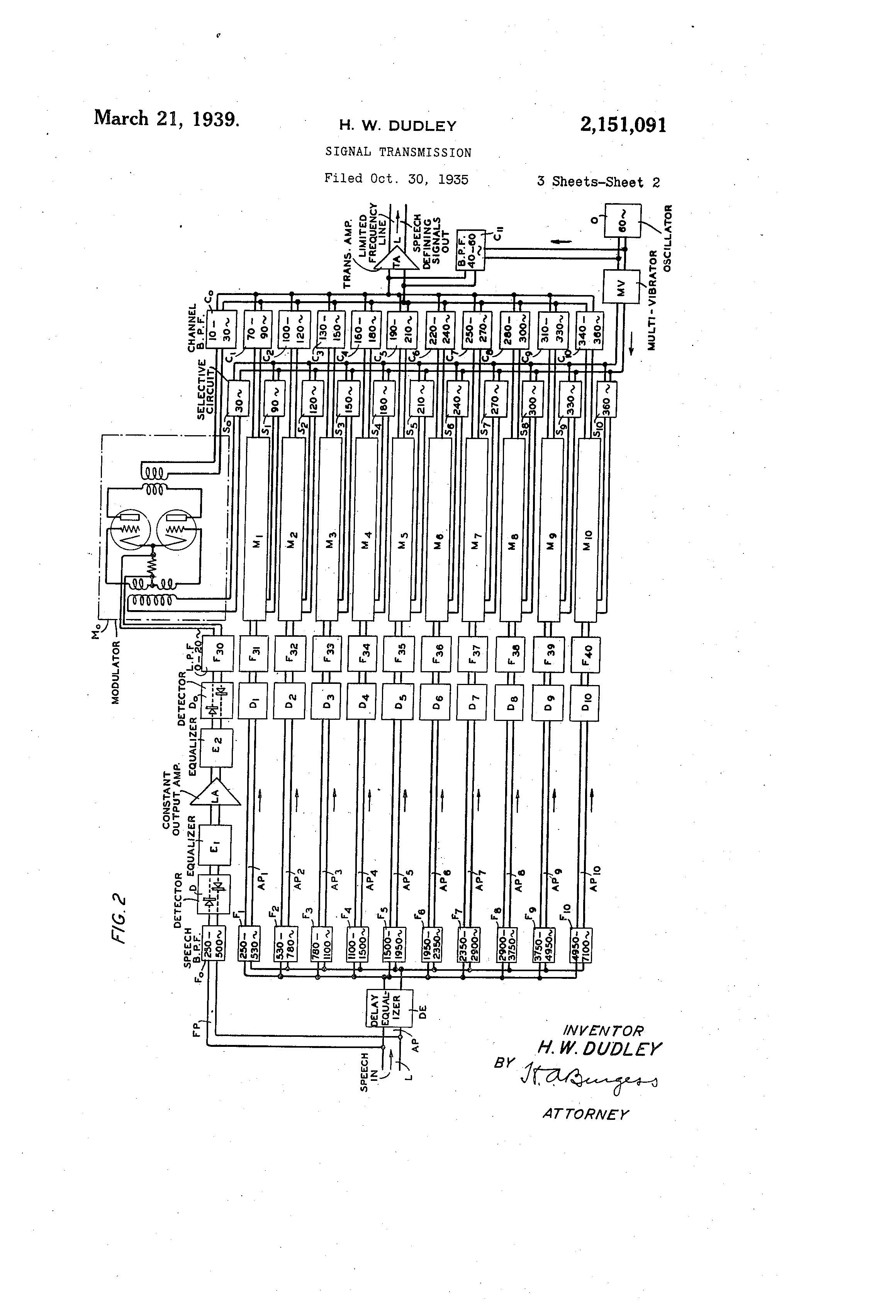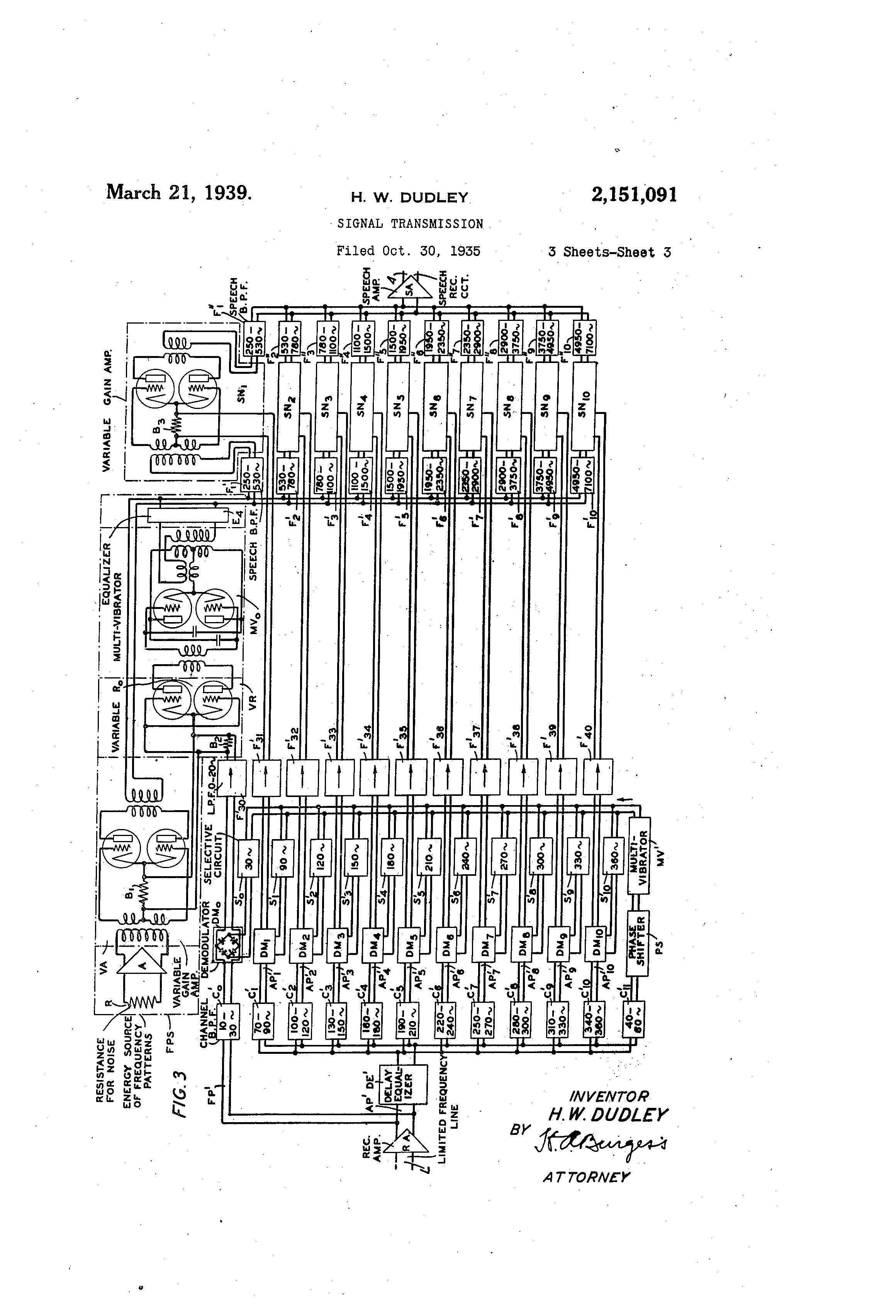Suiter Swantz IP takes a look back at past inventions and inventors with our Patent Of The Day.
On this day in 1939, Homer W. Dudley was granted U.S. Patent No. 2,151,091 for a SIGNAL TRANSMISSION.
This invention relates to wave transmission, as for example, signaling.
An object of the invention is to reduce the frequency range required for the transmission of signals, as for instance, speech,
Further, it is an object of the invention to effect such reduction without necessitating increase in the time of transmission.
It is also an object of the invention to facilitate transmission of a message over a transmission medium not adapted to readily pass the frequency band originally occupied by the message, as for example, to facilitate telephoning over long submarine cables where the higher speech frequencies cannot readily be transmitted because of excessive attenuation.
Another object is to facilitate increasing the number of signaling channels that a wave transmission medium, as for example, a land line or a radio circuit, can transmit in a given frequency range.
Another object is to facilitate increasing the signal-to-noise ratio obtainable at the receiving end of a system without increasing the sending level, as for instance, in long distance radio communication where the transmitting power required tends to become excessive.
It is also an object of the invention to promote secrecy in transmission of signals, for instance, in wire or radio transmission of speech.
Objects of the invention are also analysis, synthesis, production, reproduction, reconstruction, simulation, irritation, modification and control of sounds and waves representing sounds, especially speech sounds and vocal effects of usual and unusual character.
The information transmitted by speech doe not absolutely require all the frequency space allotted to it in the human voice. A specific case can be worked out as to how much frequency band is required as a minimum, for example, by determining and taking account of the number of the independent variables or parameters involved in speech production (i. e., the number of the independently movable physical elements of the vocal system that are involved in speech production) and the rate at which these can vary. This is done hereinafter, from which it is estimated that speech from 250 to 7100 cycles can be represented almost perfectly by the information that can be passed in a 500 cycle band or so using the same time of transmission as the speech itself requires.
The well-known rule of conservation of the product of transmitted frequency band width and time of transmission, formulated by Hartley (Transmission of Information-Bell System Technical Journal, July, 1928), which says that to produce a replica of a given piece of transmission information, the frequency band in the transmitting medium can be decreased by any desired factor only when a time of transmission is used that is longer by the same factor, applies to the case when no information as to the signal source at the transmitting end of the system is available at the receiving end or when such information is available but cannot be used in a practical way at the receiving end to reproduce information which is not transmitted over the line. Also this rule is stated for the case of distortionless transmission. Where there is distortion in the transmission medium some types are less objectionable to the ear than other types, phase distortion, for instance, within wide limits being unimportant in telephony. Thus a given frequency band with a certain amount of distortion of one type may transmit intelligence better than a wider frequency band having distortion of a more objectionable type.
Suiter Swantz IP is a full-service intellectual property law firm serving all of Nebraska, Iowa and South Dakota. If you have any intellectual property questions or need assistance with any patent, trademark or copyright matters and would like to speak to one of our patent attorneys please feel free to contact us.



